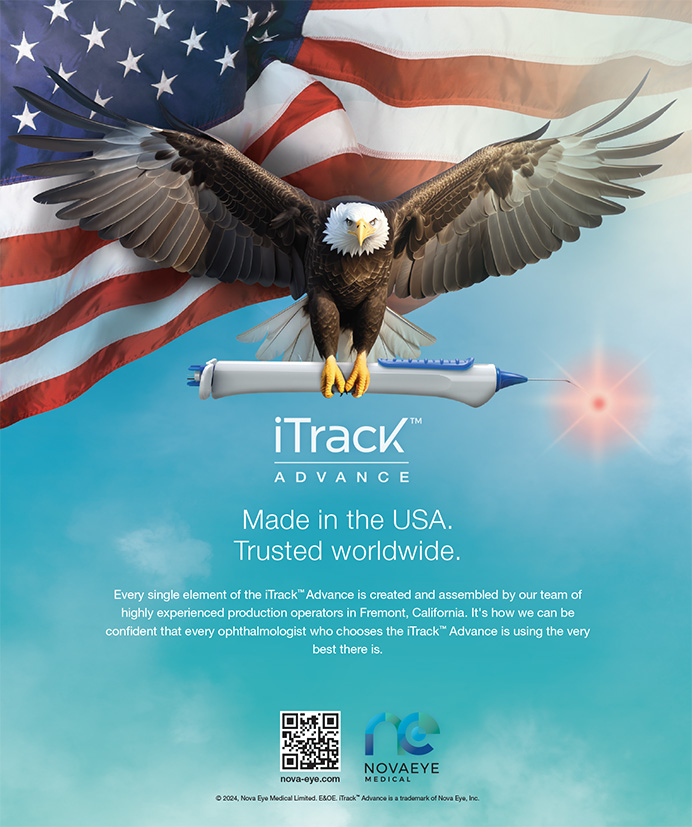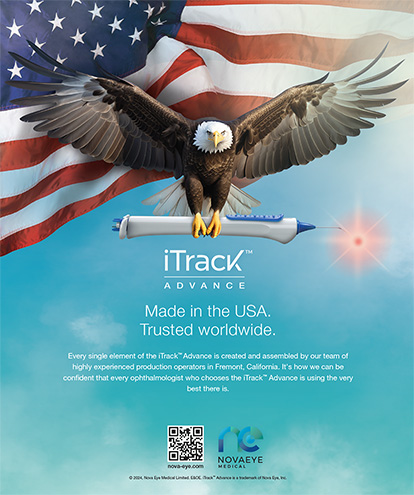It is hard to believe that the concept of correcting astigmatism concomitant with cataract surgery is now some 30 years old, as first suggested by Drs. Robert Osher and William Maloney.1,2
BACKGROUND
The use of incisional astigmatic keratotomy (AK) remained in the province of but a minority of surgeons despite efforts to refine the technique, instrumentation, and nomograms by surgeons such as Spencer Thornton, Richard Lindstrom, Francis Price, and Bruce Grene.3,4 It was not until these relaxing incisions were moved out toward the peripheral limbus, as suggested by Dr. Stephen Hollis and popularized by Drs. James Gills, Johnny Gayton, and David Dillman, that their use began to gain interest.5 Despite their relatively forgiving nature and general benefit to patients’ uncorrected visual function, the use of limbal relaxing incisions (LRIs) remained limited due to purported issues regarding predictability, the amount of effect, and regression (although data reported by some surgeons refuted these claims).6
Slowly, with the availability of presbyopia-correcting implant technology and the emergence of refractive cataract surgery, LRIs became more mainstream, as additional key opinion leaders such as Drs. Steven Dell, Douglas Koch, and Jonathan Rubenstein, among others, advocated for their use. Still, creating incisions in virgin eyes undergoing IOL surgery never significantly caught on with general cataract surgeons, and upon their approval, toric IOLs quickly surpassed LRIs in popularity, according to data from the American Society of Cataract & Refractive Surgery practice surveys and Market Scope.
PRINCIPLES FOR SUCCESS
Over the years, my experience has shown that manual LRIs, although less powerful, can be safe and effective, and their results can even rival those obtained with toric IOLs for mild to moderate levels of astigmatism (Figure 1). The keys are attention to detail and proper technique. The main principles for achieving success with LRIs follow.7
Proper Centration
As with any astigmatic correction, choosing and locating the proper meridian for correction are vital. New guidance technology will make this step easier and more accurate in the future.
Peripheral Intralimbal Placement
The term LRI is actually a misnomer. These relaxing incisions should be placed in peripheral yet clear corneal tissue.
Proper and Consistent Depth
To avoid undercorrection and regression, it is vital that these incisions be of adequate depth, preferably 85% to 90%, and consistent throughout their length. This step is achieved by maintaining perpendicularity to the corneal surface with the footplates of a manual knife. A high-quality diamond blade, preferably adjusted to a depth determined by pachymetry, further heightens accuracy and improves outcomes (Figure 2).
Tracking One’s Data and Nomogram Refinement
I have found that incision length should be defined in degrees of arc rather than millimeters of chord length and that age is an important variable. Furthermore, with-the-rule astigmatism responds differently than against the rule, perhaps due to the contribution of posterior corneal curvature as described by Dr. Koch (Table 1).
LASER TECHNOLOGY’S ROLE
One of the most exciting developments in anterior segment surgery is the advent and incorporation of femtosecond laser technology into refractive cataract surgery, and I believe that astigmatic relaxing incisions will continue to progress as a result of improved consistency in their placement and location, depth, and configuration. Questions arise, however, as with any new technique, such as whether these incisions should be made perpendicular (normal) to the corneal surface or vertical (beveled), as most lasers currently create them (Figure 2). As noted previously, traditional manual incisions perform best when they are made perpendicular to the corneal surface.
Another question is, at what optical zone (OZ) should laser incisions be placed? With traditional manual LRIs, the cuts are typically placed just inside the true surgical limbus, using the latter as a sort of stencil. Manual LRIs would therefore have varying OZs based on the relative diameter of a given eye and on the particular meridian in which the incision was being placed, as the limbus is not perfectly circular in shape. Using a laser, surgeons are now capable of creating perfectly symmetric arcuate cuts at a highly consistent radius of curvature and OZ, but it remains to be proven that such regularity will be better than varying these parameters based upon a given eye’s dimensions and anatomy.
Furthermore, current imaging systems cannot accurately measure through an arcus senilis or other peripheral corneal opacity. As such, incisions are typically placed at an empiric OZ of 9 mm or adjusted based on an individual patient’s findings. The latter variables will require further study in this new age of laser-created relaxing incisions. It will require time for new laser nomograms, taking into account these variables, to be refined. Based on computer modeling and early clinical results, a laserassisted nomogram has been derived based on my previous NAPA Nomogram used for manual LRIs (Table 2).
CONCLUSION
Manual diamond blade-created relaxing incisions remain an economical, safe, and forgiving approach to reducing astigmatism at the time of implant surgery and will undoubtedly remain an important part of the refractive surgeon’s armamentarium despite the inevitable increase in use of the femtosecond laser.
Louis D. “Skip” Nichamin, MD, now retired from private practice, was the medical director of Laurel Eye Clinic in Brookville, Pennsylvania. Dr. Nichamin may be reached at ldnichamin@aol.com.
- Osher RH. Combining phacoemulsification with corneal relaxing incisions for reduction of preexisting astigmatism. Paper presented at: The Annual Meeting of the American Intraocular Implant Society; 1984; Los Angeles, CA.
- Maloney WF. Refractive cataract replacement: a comprehensive approach to maximize refractive benefits of cataract extraction. Paper presented at: The Annual Meeting of the American Society of Cataract and Refractive Surgery; 1986; Los Angeles, CA.
- Thornton SP. Radial and Astigmatic Keratotomy: the American System of Precise, Predictable Refractive Surgery. Thorofare, NJ: Slack Incorporated; 1994.
- Price FW. Astigmatism reduction clinical trial: a multicenter prospective evaluation of the predictability of arcuate keratotomy. Evaluation of surgical nomogram predictability. ARC-T Study Group. Arch Ophthalmol. 1995;113(3):277-282.
- Gills JP. A Complete Guide to Astigmatism Management. Thorofare, NJ: Slack Incorporated; 2003.
- Nichamin LD. Changing approach to astigmatism management during phacoemulsification: peripheral arcuate astigmatic relaxing incisions. Paper presented at: The Annual Meeting of the American Society of Cataract and Refractive Surgery; 2000; Boston, MA.
- Nichamin lD. Limbal Relaxing Incisions. Thorofare, NJ: Slack Incorporated; 2014.


